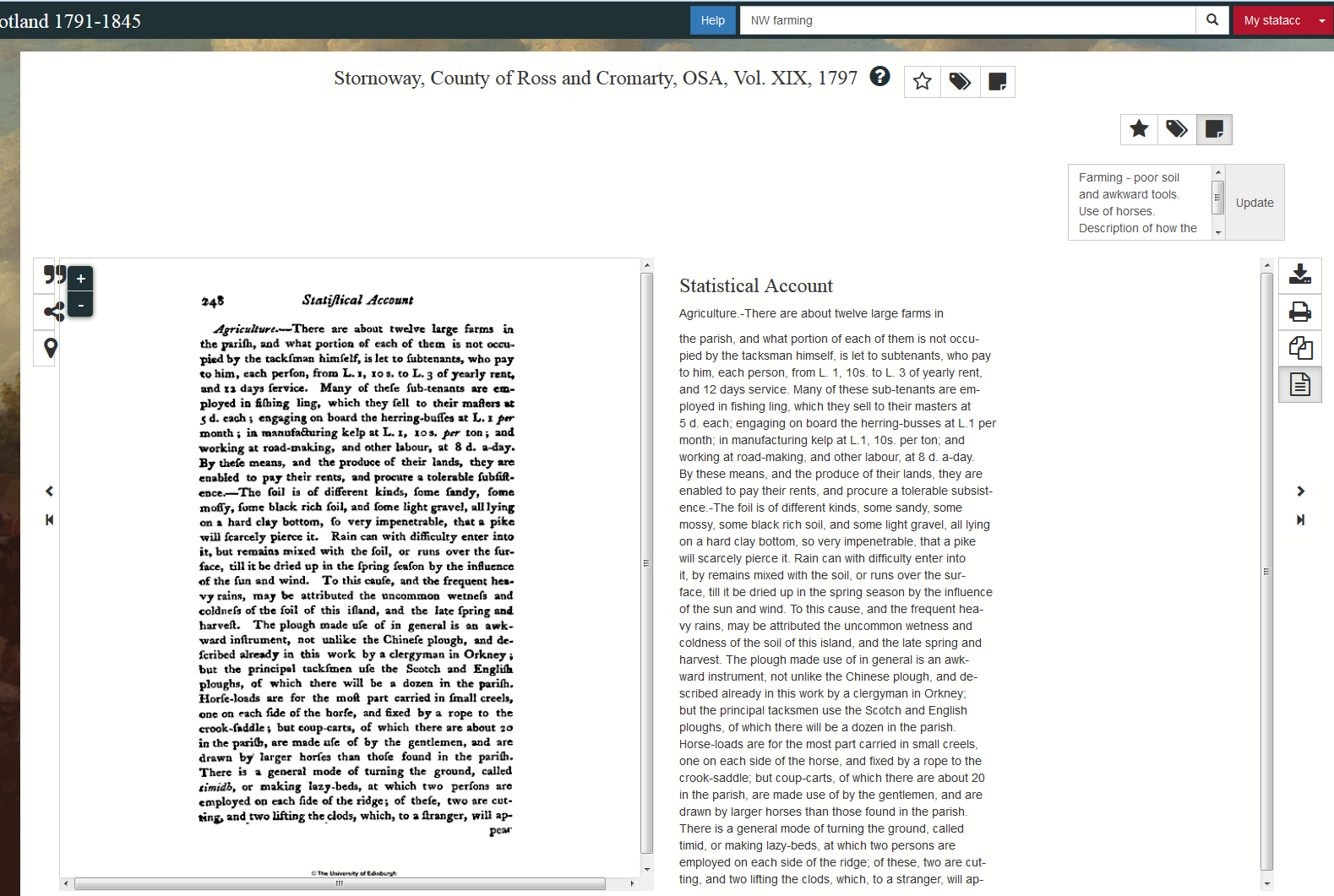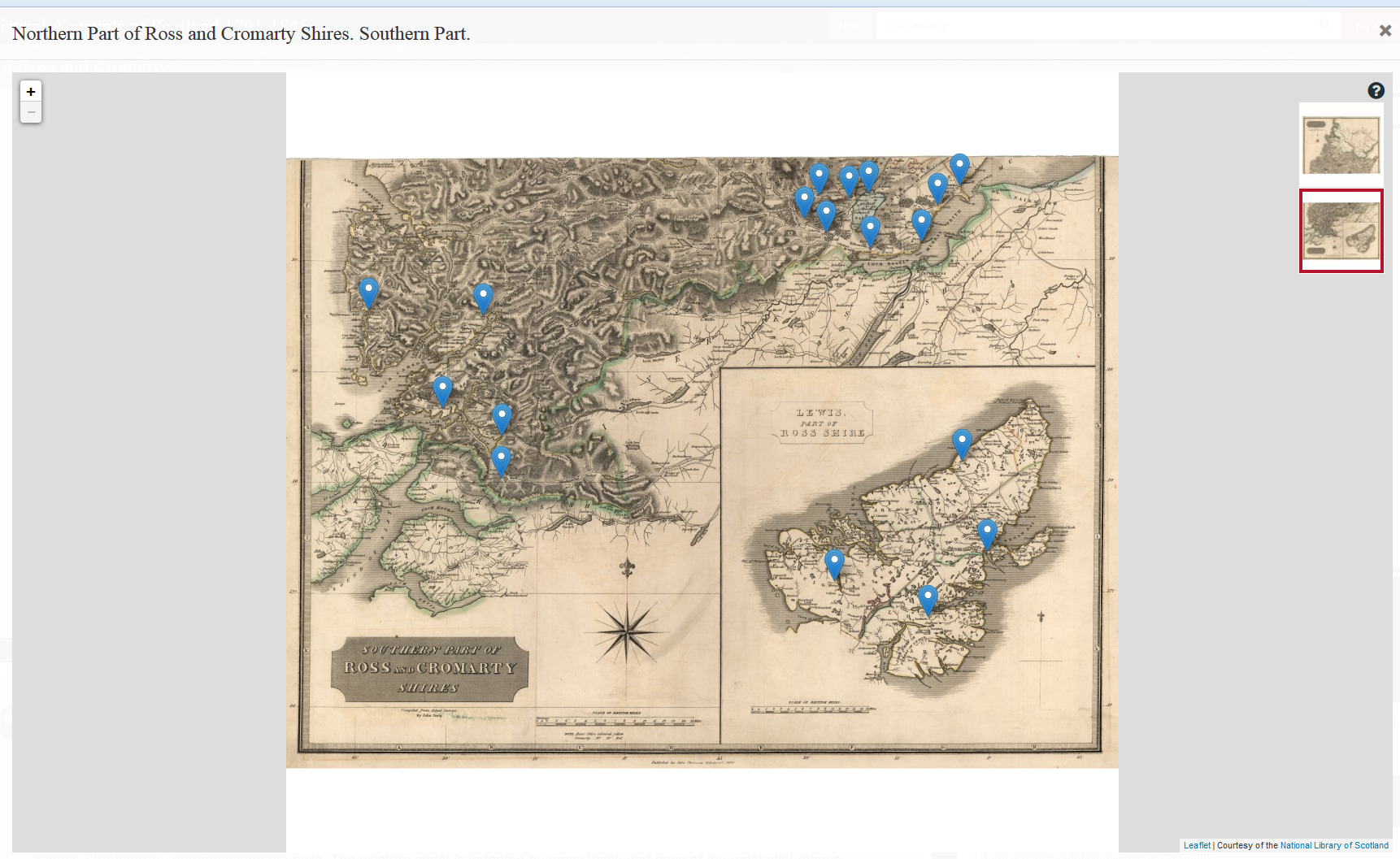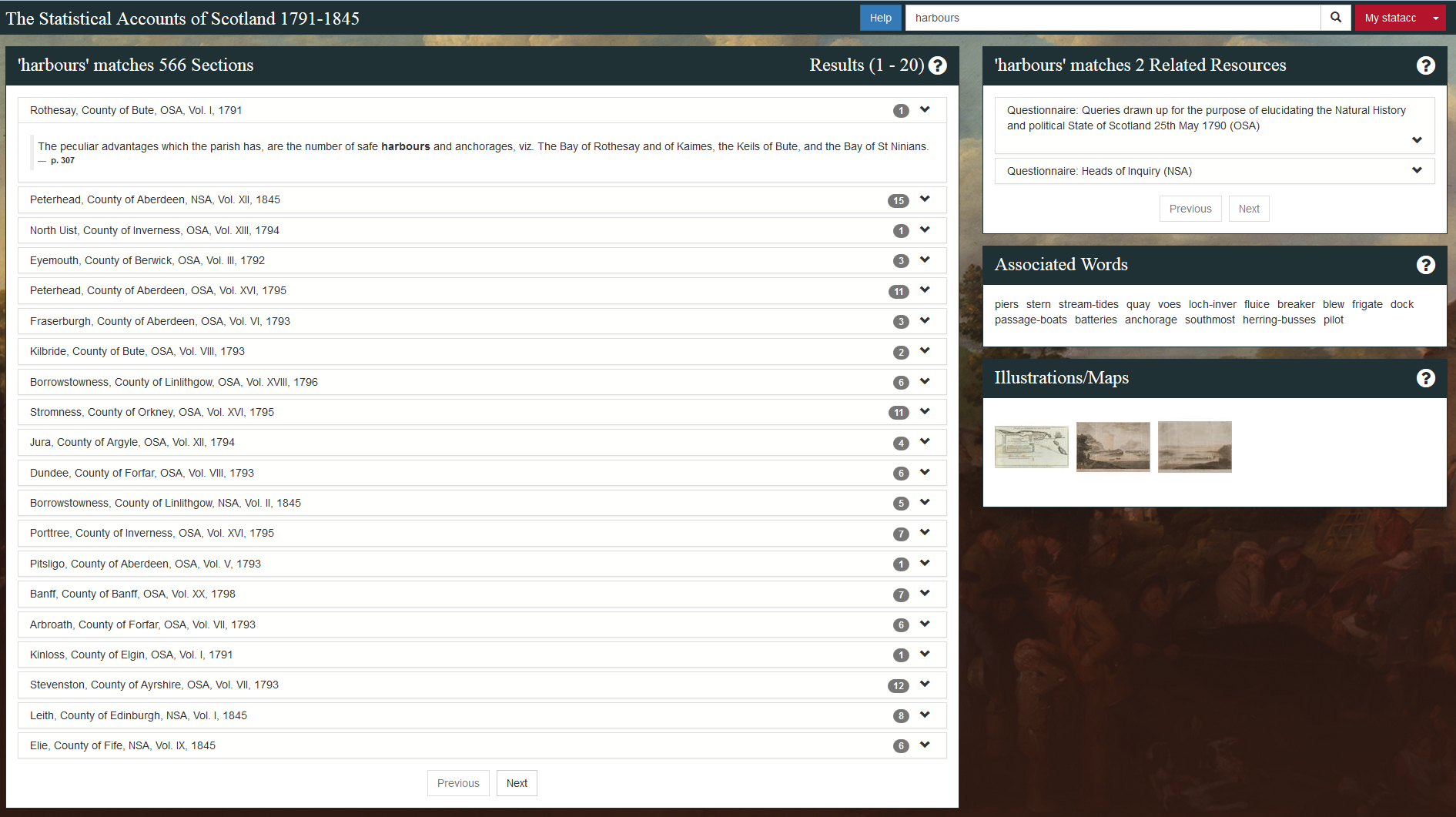This is the last in a series of blog posts about some of the functionality you may have come across (or may not have yet discovered!) in the new Statistical Accounts of Scotland Online. Here we concentrate on the new My statacc feature.
We have now introduced functionality to enable more personalisation when using the service. If you are a subscriber you can now save, annotate and tag individual pages, whole sections, illustrations and maps. You can use the star button to save. The label icon allows you tag items with one or two words of your choice, so that you can find them easily when you next visit (just type your words into the box), and the post-it note to write longer annotations which are stored alongside the item. If you are planning to coming back to a particular page, image or section, you can store information about why it is interesting, how it relates to your research or how you might want to use it.
These new features are designed to allow you to easily find and review content of particular interest to you. Tags and annotations are stored against your profile, and will remain there until you delete them. Just sign in and click on the My statacc red button on the top right of the page to find everything you have saved.

A page of the Statistical Accounts of Scotland showing personalisation features and the transcript. Screen-shot captured on Thursday 1st December 2016.
You can tag, annotate and save both sections and individual pages. Individual pages can be printed out and whole sections of the Statistical Accounts can now be downloaded as PDFs. You can even share what you have found on social media by clicking on the sharing icon and follow the links. Using these features is so easy – just click on the relevant icon and away you go!
We are particularly pleased to be able to offer such personalisation, which will help you to get the most out of your searching and browsing of the Statistical Accounts of Scotland Online. Please let us know what you think.
More information on all the features mentioned above, as well as others, can be found in the Statistical Accounts of Scotland Help Pages and the How to get the most out of the Statistical Accounts of Scotland online page. If you have any comments or queries please contact the EDINA Help Desk (edina@ed.ac.uk).



